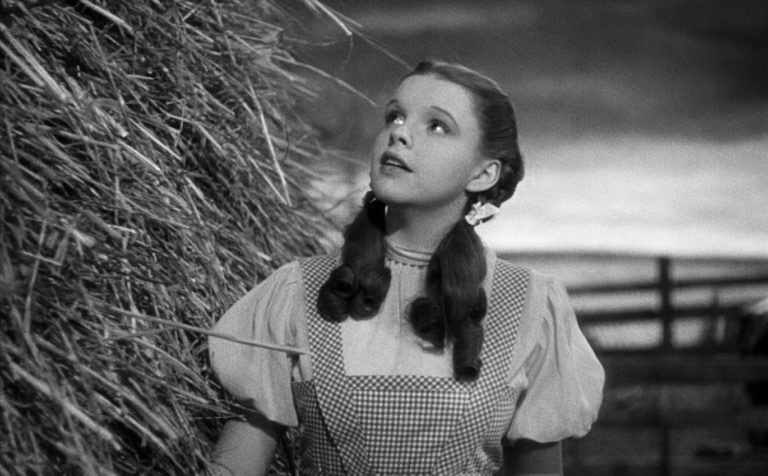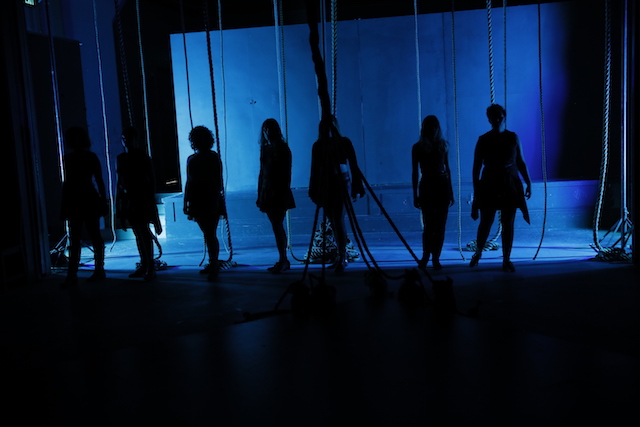Sexism in the Film Industry
Many people think that our society has improved in its representation of women over the past few decades, but in reality, the sexism that appears in the media today is not much better than it was in the 1960s. Sexism in the film industry is a serious issue that is detrimental to women’s self-worth and perceptions of their “attractiveness.” The way women are represented in film can make them feel as though they need to conform to a certain behavior or subjective beauty standard, leading them to change their personality and appearance. These representations are eaten up by the public, and continue to be demanded, despite their negative effects on everyone. This gender stereotyping should be combated by raising awareness about the negative representation of women in the media and creating films with more positive representations of women.
Across the board, women are hypersexualized and altered to fit an unrealistic standard of beauty, constantly appearing thin and flawless. These representations appear in a multitude of different mediums, including live action films, animated films, television, and advertisements. Gender dimorphism is a form of media sexism, in which the physical characteristics of men and women are distinctly different (Sexual Dimorphism). Some of the better movies as far as female empowerment goes, such as Disney’s Frozen and Brave, serve as examples of this. In these movies, the men are significantly larger than the women, and the females’ eyes are bigger than their wrists. The difference in wrist sizes between men and women shown in these movies is even more drastic than the largest man’s and the smallest woman’s wrist in the U.S. military (Cohen). Big eyes and thin bodies seem to be a symbol of femininity, not just in animated films, but in live action films, as well. Women are frequently given dramatic eye makeup and tight, slimming clothing, such as Scarlett Johansson as Black Widow in The Avengers. In many movies, looks are really the only aspects of female characters that really count.
Another form of media sexism is the serious lack of female characters in movies and television shows. Women are significantly underrepresented and misrepresented in the film industry. A study conducted by Reel Girl showed that “41 out of 47 shows on Cartoon Network feature male protagonists.” In many cases, there either aren’t any female characters, or there are very few, and even when there are women, they aren’t often developed fully or in an interesting manner. A study conducted by the Geena Davis Institute showed that the male-to-female ratio in family films is 3:1, although women comprise over 50% of the world population.
Not only are women underrepresented in front of the camera, they are also quite absent behind it, as well. According to the Geena Davis Institute, “Across 1,565 content creators, only 7% of directors, 13% of writers, and 20% of producers are female.” These statistics show that there are approximately 4.8 men to 1 woman working behind the camera. Without women working behind-the-scenes, women’s stories rarely get told. Men write the majority of screenplays and seem to have a difficult time writing strong female characters. Even when they do, those characters often still end up being sexualized and/or stereotyped in some way, whether it be their fascination with a man, their appearance, their clothes, or their career. Between 2006 and 2009, no G-rated films depicted women in “medical science, as a business leader, in law, or politics.” 80.5% of the workers were men, while only 19.5% were women, despite the fact that 50% of the workforce is women (Geena Davis Institute). This is sending the message that women are incapable of holding high positions, which ends up being echoed in real life. Women are not given a chance to succeed in these areas, because it is constantly shown as “men’s work.” Men are then boosted up in every sort of workforce and given more opportunities for success and recognition. The underrepresentation of women in films means that women aren’t often recognized for the work that they do. At the 2013 Academy Awards, 13 women received Oscars, while 89 men received Oscars (Oops, No Women). These awards are not based on sheer talent – they are based on who appears most in films, which happens to be men. Simple rules of probability show across the board, that the majority often receives more than the minority. There are hundreds of women who are just as qualified to receive an Academy Award, but they don’t, because they are not present in the process of filmmaking. Women have an equal capacity for working hard and using their imagination and they deserve to exhibit their talents in the film industry.
It is clear that in order to change the way women are represented in the film industry women need to be placed in more positions of power, both in front of and behind the camera. While this may seem like a difficult task to undertake, it was a reality in early Hollywood. There used to be very few limits to women’s roles – they understood the power that they held in that business, and used it to represent themselves in a positive way (Without Lying Down). With women taking action behind the camera, more stories about women were told, that didn’t paint them as helpless or ditzy. Instead, women were allowed to be strong and funny, and didn’t have to conform to a specific standard of beauty – they came in all shapes, sizes, and personalities (ibid). Women were – and are – better represented with more women working in the film industry. “In 2008, [Stacy L.] Smith and her team saw that under a female director, female speaking characters jumped from 26.8 percent to 41.2 percent” (USC Annenberg). As Walt Hickey explains, “When one gender dominates the creative process for a picture, that comes out on the screen.” It is pointed out in Rossalyn Warren’s Upworthy video that men currently dominate the film industry, so “the entire industry is built upon creating films and movies that cater to, and are about, men.” Reel Grrls is a Seattle-based organization that gives girls the opportunity to be active in all aspects of filmmaking, including writing, directing, acting, and producing. Reel Grrls encourages girls to look past what is dished out in today’s media, and to tell stories that are relevant to their lives, through the process of filmmaking. These girls are being made aware of the stereotyping that has gone on throughout film history, and are being given the choice to tear those representations down and build their own ideas of what women are capable of, instead of focusing on how to conform to the ideals expressed through the media.
Gender stereotyping in media is extremely harmful to women’s view of themselves. Many women see the thin, flawless bodies of supermodels and actresses and aspire to look like them. The fact is, though, that the majority of these images have been digitally altered. Celebrities don’t even look like how they are portrayed in the media. Cindy Crawford once said, “I wish I looked like Cindy Crawford” (Weber). Numerous celebrities, in fact, have pointed out the changes that were made to their appearances. Kate Winslet, for example, called out GQ magazine for photoshopping an image of her, slimming down her thighs and waistline (ibid). Kiera Knightly also pointed out the enhancement of her breasts for the movie poster of King Arthur (ibid). Women go to great lengths to achieve this standard of beauty, taking such drastic measures as starving themselves or getting plastic surgery, neither of which turns out well. The awful truth is, though, that this standard of “beauty” is not realistic! Very few people actually look like celebrities are made to look like in the media, and it is not worth hurting and changing yourself to attempt to look like them. No one is perfect – perfection does not exist. We are people, and personality and spirit matter more than appearance. Everyone needs to hear this.
The younger generation is being raised with the unhealthy ideals and perspectives demonstrated in the media. As the Geena Davis Institute puts it, “Children are the most vulnerable recipients of depictions that send the message that girls are less valuable and capable than boys.” Many girls grow up “empathizing with male heroes and stories and ignoring the marginalization of their gender” (Chemaly). They don’t know anything different, so they go along with what they see, even though subconsciously, it is detrimental to their sense of power and self-worth. These girls rarely see themselves shown as the hero or protagonist. In movies they see Superman, Ironman, Batman – Wonder Woman is forgotten. It is true that women are often not as physically strong as men, but it doesn’t mean they don’t have power. They are just as smart, wise, and capable as men and they deserve to be depicted that way. Instead, Hollywood perspectives on women have trained men and women to consider women’s attractiveness first and foremost, even though physical attributes make up a very small portion of a person’s entirety. The “hypersexualization and objectification of female characters leads to unrealistic body ideals in very young children, cementing and often reinforcing negative body images and perceptions during the formative years,” thus continuing the cycle of sexism from generation to generation (Geena Davis Institute).
Children need to be raised with an awareness of the sexism that occurs in films, and encouraged to create their own ideas about gender roles. “Kids need to see images of girls that are not sexualized” (Reel Girl). This will show them that this is not, in fact, the only thing that is important about a girl or woman, and will lead them to recognize other aspects of females. In her Huffington Post article, Soraya Chemaly explains some steps that can be taken to change this cycle of sexism in children. 1) Explain gender biases and stereotypes to children to make them aware of what they are watching. This will enable them to notice when women are being represented negatively, and possibly when women are not even present in a story. 2) Allow boys to empathize with girls, instead of criticizing them for doing so. This shows them that being a girl is not in any way inferior or undesirable. “The media [attempts] to shame women for being too ‘feminine’ or not being ‘feminine’ enough, and shame men for not fitting a hypermasculine ‘ideal,’ lead[ing] to an imbalanced and stunted society, where even the most accomplished individuals are judged and limited by arbitrary gender rules” (The Representation Project). We do not want children to constantly feel judged and demeaned, just because they want to express themselves a certain way. Not only does this perpetuate sexism, it also leads to homophobia. These are issues we want to move past in our society, and that will not happen until we learn to accept people for how they identify and express themselves. Ms. Chemaly’s final tip is to, 3) Discuss the disjuncture between female representation in the media and in real life, as well as the roles that both genders are put in in movies and television shows. Women are not represented accurately in the media, and it is extremely important for children not to interpret these depictions as truth. It is harmful and dangerous for boys to see women as weak, inferior, and as sex objects, and for girls to think of themselves in those terms. There is so much more to humans than their outside appearances.
Actresses should be judged on their ability to act, not just on their beauty. Actresses, such as Victoria Frings, have started to notice that the character breakdowns for women put much more emphasis on looks, rather than personality, and frequently describe women in relation to the male character of a show or movie. Their sole purpose in films is often to just look beautiful – they are not given any motivation, besides pleasing a man, and the storyline revolves around that man and his goals and purpose. This is true of television shows, as well. Have you ever noticed that TV wives are much hotter than their husbands? It turns out that this is determined before the show is even cast (ibid). In casting notices, “the man is described by his personality and his character’s transformation, but the woman’s personality description is intertwined with a description of her looks” (ibid). This means that many qualified women end up not being given roles because they are not deemed “beautiful enough.” It is time for producers and casting directors to start writing casting notices that take into account the complexity of women, and give them a chance to demonstrate their talent and depth, rather than simply focusing on their looks, because there is much more encompassing a human being. This can’t change until we demand it, though.
Sexism is reflected between reality and the media, and the creators of entertainment give us exactly what we ask for. Stacy L. Smith said that, “‘The lack of equality sends a message to future content creators and consumers about who is and who is not important and who is and is not valued in film’” (USC Annenberg). Women are frequently portrayed as less-than, or inferior to, men. They are shown merely as eye-candy, rather than true characters, with interesting personalities and motivations. These representations of women are teaching men that it is okay to see and treat women as sex objects. It could be likened to condoning rape; pushing the stereotyping and skewed perspectives of women off to the side, saying, “Well, boys will be boys.” No. Men have the capacity to see deeper into a woman, and recognize her for her entirety – not just her looks; it just depends on whether they decide to use that ability. Christian Clifton said, “Most of us know that sexism is detrimental not only to women, but also to men and our entire society. We know that equality is something to aim for, and yet it is not a practice we readily engage in. Hollywood may be partly to blame, if not a direct root – they certainly do not help fight sexism – but the makers of entertainment generally cater to popular consent. If the masses want it and consume it, they will make it for us.” This cycle will continue on, unless we demand a change from Hollywood.
Support films that express healthier messages and ideals with your dollars. Examples of this include The Hunger Games, Frozen, and Divergent, all of which represent women in a positive and powerful way. One way to measure the representation of women in films is using the Bechdel Test. To pass this test, a movie must 1) Have at least two [named] women in it, 2) Who talk to each other, 3) About something besides a man (Bechdel Test). As Walt Hickey said, “The Bechdel test isn’t measuring whether a film is a model of gender equality… But it’s the best test on gender equity in film we have” (Hickey). We can encourage gender equality by supporting films that at least have women in them, women who have some sort of motivation besides pleasing a man. Although this is not the only goal for equal representation, it is a start. It is time to show Hollywood that we won’t support films that only cater to and feature men, because right now they don’t have much incentive to stop (Hickey). The public is still eating up everything that they put out, and so Hollywood continues to make money. However, studies have shown that “Films that feature meaningful interactions between women may in fact have a better return on investment, overall, than films that don’t” (ibid). This correlation could serve as incentive for studios to start producing more films with female protagonists. There would be even more of an incentive if the public stopped supporting films that represent women in a negative, stereotypical, or hypersexualized way. Of course, this is not going to help the problem immediately, but if people were to do this, Hollywood would eventually get the message and change its behavior.
Hollywood’s change in behavior will rely heavily on the public’s ability to change, as well. It is time for people to start recognizing their own gender biases and dealing with those biases in a healthy manner. Recognizing sexism in Hollywood is not about blaming or shaming anyone – it is about providing an alternative to fitting women into boxes based on societal standards and subjective ideals of beauty. It takes time and effort, but it is possible to retrain your brain to consider all of the aspects of a human being, and not judge them simply by their appearance. As Soraya Chemaly said, “Ignoring sexism doesn’t make it go away or make it any less unpleasant.”
Citations
“Academy Award-nominated Movies Lack Females, Racial Diversity.” USC Annenberg. USC Annenberg, 22 Feb. 2012. Web. 13 Apr. 2014. <http://www.annenberg.usc.edu/News%2520and%2520Events/News/120222SmithGender.aspx>.
“Bechdel Test Movie List.” Bechdel Test Movie List. Bechdel Test, n.d. Web. 13 Apr. 2014. <http://bechdeltest.com/>.
Chemaly, Soraya. “5 Ways to Help Boys and Girls Understand Sexism in Movies.” The Huffington Post. TheHuffingtonPost.com, 06 Dec. 2011. Web. 13 Apr. 2014. <http://www.huffingtonpost.com/soraya-chemaly/5-ways-to-help-kids-under_b_1130008.html>.
Clifton, Christian. “Hollywood, Sexism, and the Minds of Men.” The Good Men Project. N.p., 26 Jan. 2014. Web. 13 Mar. 2014. <http://goodmenproject.com/featured-content/hollywood-sexism-minds-men/>.
Cohen, Philip N., PhD. “‘Help, my eyeball is bigger than my wrist!’: Gender Dimorphism In Frozen.” Web log post. The Society Pages. Sociological Images, 17 Dec. 2013. Web. 13 Mar. 2014. <http://thesocietypages.org/socimages/2013/12/17/help-my-eyeball-is-bigger-than-my-wrist-gender-dimorphism-in-frozen/>.
Frings, Victoria. “Hollywood’s Hidden Sexism: How Casting Notices Keep Beauty Standards Alive.” Saloncom RSS. Salon, 24 Jan. 2014. Web. 13 Apr. 2014. <http://www.salon.com/2014/01/25/hollywoods_hidden_sexism_how_casting_notices_keep_beauty_standards_alive/>.
Hickey, Walt. “Dollar-And-Cents Case Against Hollywood’s Exclusion of Women.” FiveThirtyEight. Bechdel Test, 1 Apr. 2014. Web. 13 Apr. 2014. <http://fivethirtyeight.com/features/the-dollar-and-cents-case-against-hollywoods-exclusion-of-women/>.
“Oops, No Women.” Oops, No Women: The Science of Sexistics. N.p., 7 Mar. 2014. Web. 11 Mar. 2014. <http://oopsnowomen.com/>.
“Research Informs & Empowers.” Geena Davis Institute on Gender in Media. Geena Davis Institute on Gender in Media, n.d. Web. 13 Apr. 2014. <http://www.seejane.org/research/>.
“Sexed up Powerpuff Girls Point to Cartoon Network’s Girl Problem.” Reel Girl. N.p., 24 Jan. 2014. Web. 13 Apr. 2014. <http://reelgirl.com/2014/01/sexed-up-powerpuff-girls-point-to-cartoon-networks-girl-problem/>.
“sexual dimorphism.” Collins English Dictionary – Complete & Unabridged 10th Edition. HarperCollins Publishers. 13 Apr. 2014. <Dictionary.com http://dictionary.reference.com/browse/sexual dimorphism>.
The Representation Project. “WIN: Veet Drops Sexist, Body Shaming Ad Campaign.” Message to the author. 12 Apr. 2014. E-mail.
Warren, Rossalyn. “What The Bechdel Test Is And Why Every Movie In Hollywood Needs To Pass It.” Upworthy. Feminist Frequency, 2014. Web. 13 Apr. 2014. <http://www.upworthy.com/what-the-bechdel-test-is-and-why-every-movie-in-hollywood-needs-to-pass-it?c=upw1>.
Weber, Brandon. “5 Minutes Of What The Media Actually Does To Women.” Upworthy. Challenging Media and Jean Kilbourne, 2014. Web. 13 Apr. 2014. <http://www.upworthy.com/5-minutes-of-what-the-media-actually-does-to-women-8?c=ufb4>.
Without Lying Down. Dir. Bridget Terry. By Cari Beauchamp. Perf. Uma Thurman and Kathy Bates. Turner Classic Movies, 2000. DVD.







One Comment